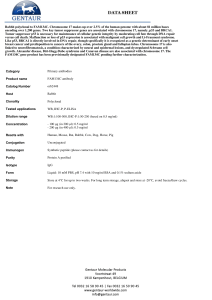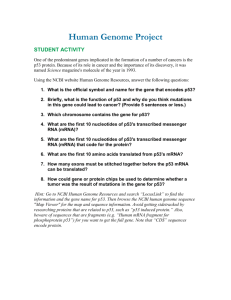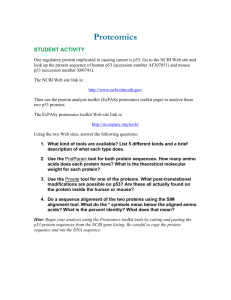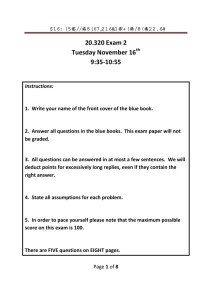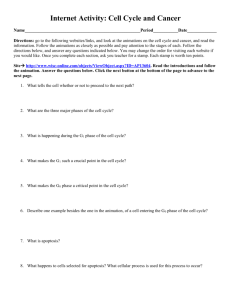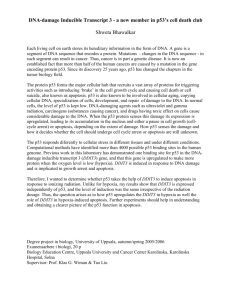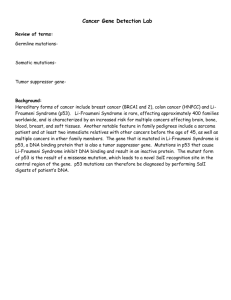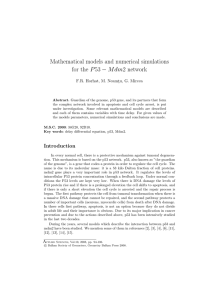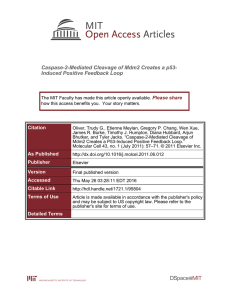Lecture 17 Basics: Gene regulation Overview 1. 2. 3. 4. 5. Chromatin
advertisement
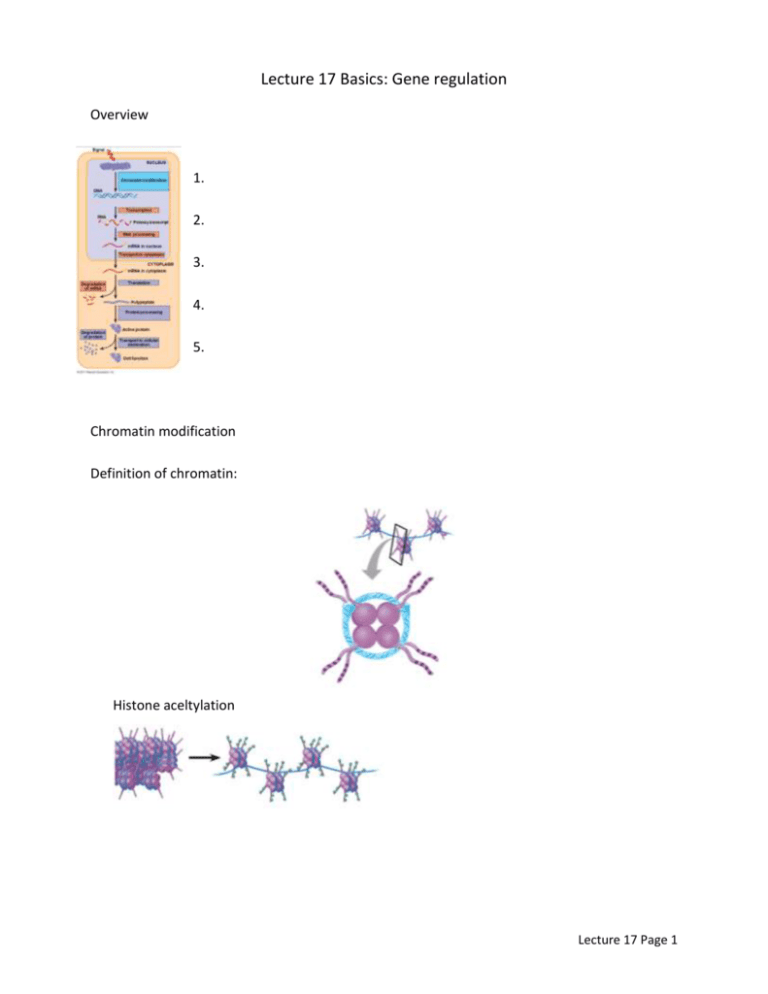
Lecture 17 Basics: Gene regulation Overview 1. 2. 3. 4. 5. Chromatin modification Definition of chromatin: Histone aceltylation Lecture 17 Page 1 DNA methylation Regulation of transcription Lecture 17 Page 2 Lecture 17 Page 3 17.4 RNA Processing, Splicing Define: snRNA: snRNP: spliceosome: intron exon Lecture 17 Page 4 Alternative RNA splicing: miRNA degradation of mRNA Define: miRNA Dicer Lecture 17 Page 5 17.6 Proteasome degradation of proteins Lecture 17 Page 6 Class Notes: Learning goal: to apply what you’ve learned about gene regulation to a new system: the p53 protein in cancer cells. The following is presented as if it were a short-answer section of the final exam… The protein p53 is mutated in an estimated 30-50% of all cancer types. In a healthy cell, p53 is translated and then ubiquinated. What type of gene regulation is this? _________________________________ In a healthy cell, a protein called MDM2 binds to p53 and covalently attaches ubiquitins to it. Below is an example of the experimental results if p53 is removed from the cell using the protein synthesis inhibitor cycloheximide: According to this figure, which is most likely? Chose an answer and explain why. A. p53 is an activator of MDM2 B. MDM2 is required for transcription of p53 C. Increasing cyclohexamide will increase the ubiquitination of p53 Here is an image that shows the interaction between p53, a transcription factor for MDM2, and its resulting ubiquitination of p53. This odd process of synthesizing and then immediately removing a protein allows the levels of p53 to rise very quickly as soon as MDM2 is turned off. Be able to describe the five steps below and on the back. (ex:) 1. P53 binds to the gene for MDM2, activating transcription. 2. Lecture 17 Page 7 If a cell is damaged by UV light, or low oxygen, then the p53 molecule is made active by the addition of phosphate groups, which makes it difficult for MDM2 to bind to it. MDM2 is also deactivated and sequestered in the nucleolus. Will this change increase or decrease the amount of p53 present in the cell? _______________ P53 then acts as a transcription factor on other genes, turning on several that prevent the cell from dividing until DNA repair can occur. Here is a “cartoon” of the process: What type of signal does p53 need to enter the nucleus? ________________________ The cartoons show genes that can transcribe proteins that both start and stop mitosis. Is p53 more likely to be a transcription factor for genes to stop mitosis or allow mitosis to proceed? _______________________ The p53 protein also binds to another gene that produces a miRNA. What type of gene regulation from the basics video utilizes miRNA? ________________________ Which type of mRNA is this miRNA-protein complex most likely to block or degrade? Chose an answer and explain your reasoning. A. mRNA for “stop mitosis” proteins B. mRNA for “go mitosis” proteins Cancer is defined as uncontrolled cell division and growth. In many cancers, there is a mutation in the gene that codes for p53 that prevents it from binding to DNA. On the back of this paper, summarize how p53 acts in an unstressed cell, a cell damaged by UV light, and in a cancer cell. You should be able to show three types of gene regulation to an instructor when asked. Lecture 17 Page 8

